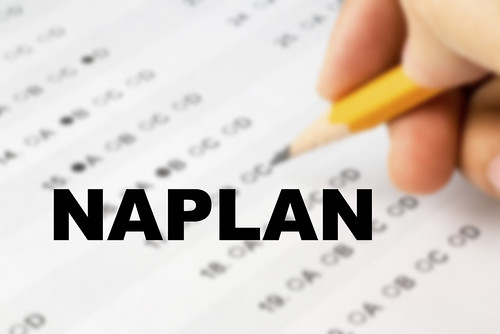NAPLAN report reveals disproportionate educational proficiency between students from remote and urban schools
NAPLAN #NAPLAN

Students in Australia’s remote schools fall behind in education proficiency standards by double the amount than those in metropolitan areas, shocking new figures from the National Assessment Program – Literacy and Numeracy (NAPLAN) have revealed.
The data released by the Australian Curriculum, Assessment and Reporting Authority (ACARA) found significant educational imbalances between children studying in urban and rural regions, with less than three in 10 students in remote schools rating in high tiers of performance compared to at least three in five in major cities.
Under 2023’s NAPLAN results, which come after a major revamp of the testing approach, four million students across the country were assessed against four levels of proficiency based on previous years of schooling: Exceeding, Strong, Developing and Needs Additional Support.
On a national scale, about 65 per cent of students achieved ‘Exceeding’ and ‘Strong’ levels, while 23 per cent fell in the ‘Developing’ grade. Approximately 10 per cent were in the lowest ranking level.
But while this marked a “strong performance” amongst Australian students First Nations communities and other demographics were disproportionately represented in the lower gradings.
About one third of Indigenous students were found to be in need for additional support in numeracy and literacy skills, compared to just one in 10 overall.
Fewer than 30 per cent of students from rural schools were rated ‘Strong’ or ‘Exceeding’ across all domains and year levels.
“This year’s NAPLAN results are the first to reflect the new reporting changes. They show strong performance among Australian students in literacy and numeracy skills, but also provide clear information on areas requiring improvement,” ACARA CEO David De Carvalho said.
“With expectations set at a higher level than in previous years, the new reporting is showing those areas where we need to focus our efforts on supporting more students to meet expectations and succeed.
“The results also continue to highlight the educational disparities of students from non-urban areas, Indigenous Australian heritage and those with low socio-educational backgrounds.”
Average NAPLAN scores for students from the highest socio-educational background in big cities were substantially larger than those from the lowest.
The staggering statistics paint a troubling picture of declining educational standards in Australia, marred by poor student achievement through many subsequent years of schooling.
Federal Education Minister Jason Clare said the government would implement a range of measures to improve proficiency standards for children in the wake of the NAPLAN report’s damning findings
“I’ve said a number of times – We need serious reform in education, I think this report makes that blisteringly clear,” he told Sky News Australia on Wednesday.
“We now know if you’re below the minimum standard in Third Grade, then chances are you’re going to still be below the minimum standard when you’re in Year Nine… as a result, lot of those children drop out and don’t finish high school.
“And this is happening at a time when you need almost everybody to finish high school because that’s what you’re going to need to get the jobs in the economy that lies ahead.”
Mr Clare said although funding into schools was quite significant already, the government would work with individual state and territory jurisdictions to “fix the gaps” in the system.
“No doubt a big investment in our schools and that’s important but not every school is funded equally and that’s part of the challenge here,” he said.
“We’ve got to tie that funding to the sorts of things that are going to help children who fall behind at school and that’s what I’m determined to do.”
Federal President of the Australian Education Union Correna Haythorpe also doubled down on the view the NAPLAN results reinforced the need for more funding into public schools, to aptly cater to the most in-need student groups.
“The overall pattern of these results add to the evidence about the unacceptable achievement gaps between students from different backgrounds and locations,” she said in a statement on Wednesday.
“Public schools educate most of the students with higher needs and yet only 1.3% are funded to the Schooling Resource Standard (SRS), which is the minimum level governments agree they need.
“The needs of our children are growing but the funding from governments hasn’t kept up. Government funding for private schools has been increasing at twice the rate of public school funding and 98 per cent of private schools are resourced at or above the SRS.
“What we need is real action from the politicians to ensure public schools are funded to deliver the additional support to the children who need it.
“We can’t close the achievement gaps without closing the resources gaps.”
The Schooling Resource Standard (SRS) is an estimate of how much total public funding a school needs to meet its students’ educational needs, calculated for each school every year off a base amount and several needs-based loadings.
In 2023, the Department of Education has estimated recurrent funding for schools will amount to a total of $27.3 billion, which included $10.6 billion to government schools, $9.3 billion to Catholic schools, and $7.4 billion to independent schools.